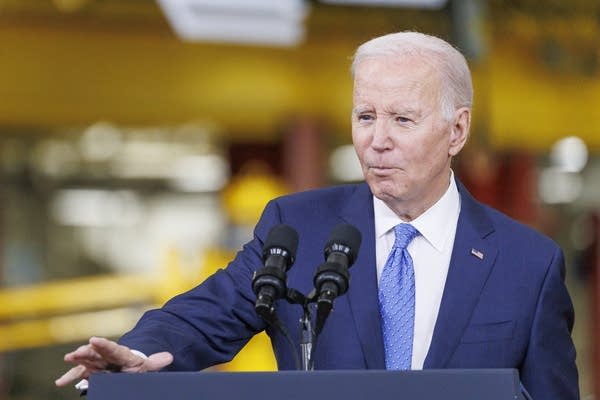Minnesota manufacturer finds gold in green hydrogen, electrolyzers

Go Deeper.
Create an account or log in to save stories.
Like this?
Thanks for liking this story! We have added it to a list of your favorite stories.
A large factory north of Minneapolis in Fridley, Minn., has bustled for years turning out a variety of fossil-fueled electric generators. They range from small units designed for recreational vehicles to massive installments for much larger-scale power needs, including those of the military.
Now, alongside that conventional production, is an assembly line turning out the first U.S.-made, large-scale machines called electrolyzers that will produce hydrogen without using fossil fuels.
“Think of it as a black box,” said Alex Savelli who is overseeing Cummins’ U.S. electrolyzer production. “It allows you to separate water using electricity.“
Savelli says inside the black box are numerous plates made out of precious metals.
Turn Up Your Support
MPR News helps you turn down the noise and build shared understanding. Turn up your support for this public resource and keep trusted journalism accessible to all.

Electricity is applied as water passes through the plates. What comes out of the box are the chemical components of water — pure hydrogen and oxygen.
“If you’re using renewable electricity, whether it’s solar, wind, hydro power, then basically you are creating green hydrogen when you do that,” Savelli said.
Mike Reese oversees green hydrogen research at the University of Minnesota.
He said what Cummins is doing in the suburban Twin Cities is noteworthy as the world seeks to reduce carbon emissions.
“I think it’s really exciting,” Resse said.
Exciting because hydrogen can be used in many ways. It’s a needed chemical input for many fertilizers and other products. It also can serve as an alternative or supplement to fossil fuel use, from refining iron ore and petroleum to making electricity. And when hydrogen burns, it just turns back into water.
“There are other electrolyzer manufacturers in the U.S., and they’re scaling up as well to meet this demand, but Cummins is the first to start their production line,” Reese said.
Electrolyzers have been around for a long time. Reese said what changed is there are now major tax incentives to bolster the technology.
“[The] Infrastructure bill and the inflation Reduction Act — those bills have really catalyzed the move toward clean hydrogen,” Reese said.
Think about government tax credits for solar power generation. Not long ago solar was something of an oddity. Government subsidies helped make solar commonplace and, as the industry has grown, solar has become much less expensive.
A major downside of hydrogen is the difficulty of storing and transporting it. It must be kept at extremely low temperatures. Using it where it’s produced is a way to get around storage and transportation challenges.
The Cummins division Accelera says it already has $300 million in signed contracts for its Minnesota-made electrolyzers.

“We are purchasing the hydrogen electrolyzer equipment in order to generate green hydrogen that will be used to produce highly sustainable jet fuel,” said Clay Norrbom, president of Zero6 Energy, one of Accelera’s early customers.
Norrbom said carbon-neutral aviation fuel will be made at a soon-to-be-built plant in South Dakota within three years. Wind will power the facility and its electrolyzers. The hydrogen the electrolyzers produce will be used to convert corn ethanol to jet fuel.
Another early customer, Florida Power and Light, will use electrolyzers to make hydrogen to burn with natural gas at a power generation facility. Adding hydrogen will help reduce the facility’s carbon emissions.
Norrbom said the market for green hydrogen is vast and growing.
“The financial markets, the energy companies, they see hydrogen as a necessary next step in our journey toward achieving decarbonization of the economy," Norrbom said.
Alex Savelli from Cummins’ Accelera division said the new electrolyzer line is likely just the beginning.
“We may need another facility after we have maxed out here,” Savelli said.



